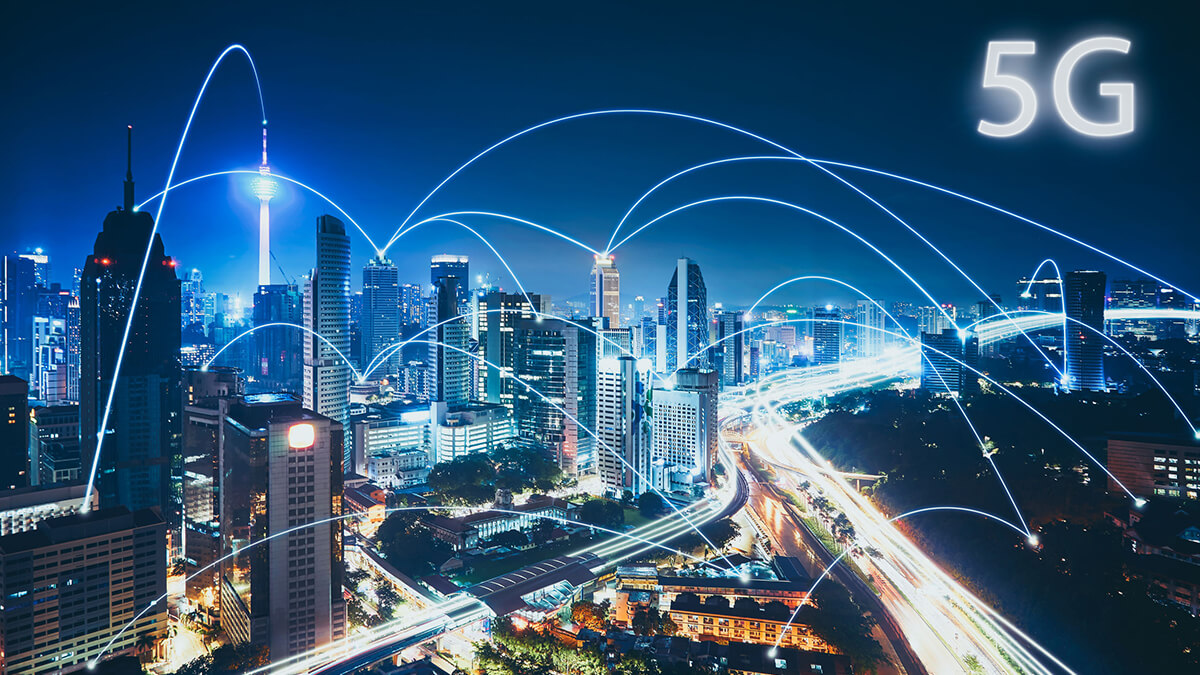The 6G technology after 5G has already been studied by existing countries. Relative to the revolutionary change of 5G, 6G should be the perfection, strengthening, and further optimization and promotion of 5G technology.
This is the same as the evolution from 3G to 4G. 3G is moving from the era of digital communications to the era of data communications. Although 2G also has digital communication capabilities, it mainly sends SMS and caller ID. Internet access is a very secondary capability. The amount of data used by users is also very small. The core network and billing system of telecommunications companies are based on voice. After entering 3G, although the voice is still very important, the network is no longer voice-centric. Data services have become an important business. The core network and billing system are data-centric systems. From 2G to 3G, it is a revolution for the communication network and a completely new transformation.
However, objectively speaking, the network speed of 3G is still relatively slow, and 4G has greatly improved the network speed, which has greatly improved the user experience. We can understand 4G as technological evolution, but the network speed has increased, and its infrastructure and basic capabilities have not changed revolutionarily compared to 3G. Even a large number of 4G services are gradually built based on 3G. However, with the advent of 4G, the efficiency of these services has been greatly improved, ushering in the outbreak period.
5G has made more demands in technology, with faster speed, lower power consumption, and lower latency. Compared with the 4G network, 5G adjusts and rebuilds the entire network structure, and the core network, management, and billing system will also undergo tremendous changes. The business formed based on 5G is no longer limited to the transmission of information, but a smart Internet. This network integrates mobile Internet, smart sensing, big data, and smart learning to form new capabilities, which can be said to be a revolutionary change. The 5G revolution embodies huge changes in technology, management, billing, business models, business models, and business forms.
So, can 5G realize all visions and achieve perfect feelings and experiences? Not 5G also undergoes a long-term evolution process, and gradually improves from the network, management system, and other aspects. Therefore, in this sense, 6G will not undergo technological revolution again and make revolutionary changes in the system, but based on 5G, according to the actual operating situation, new problems are found, or the deficiencies of 5G are improved.
6G Will Further Integrate the Network
At present, the mobile communication network and the satellite network are two independent networks, which operate independently and cannot play a role of integration and supplementation. 6G may have a trend of integration between heaven and earth. A network can not only provide land coverage through ground base stations but also jointly network through low-orbit satellites and high-orbit satellites. On the ground, through many repeaters, small The base station provides deep coverage. The integration of the network can take into account the surface and the point. Through high-orbit satellites and low-orbit satellites, the surface is guaranteed to exist in any corner of the earth. At the same time, in densely populated areas or the current network is not enough Dense areas are covered deeply and can go underground, such as subways, tunnels, parking lots, mines, and other special places with poor signals.
In addition to being able to be covered at a certain depth below the surface, underwater communication should also be possible in the 6G era and become part of the entire network coverage system. For example, in offshore, rivers, and lakes, water quality, underwater plants, underwater organisms, underwater culture products, water temperature changes, nutrient content in water, pollutant content, displacement of underwater dams, etc. are all required. Monitoring and underwater monitoring with network coverage will greatly improve the monitoring and management capabilities. 6G can also play an important role in collecting ocean-related data, monitoring environmental pollution, climate change, seafloor anomalies, seismic volcanic activity, exploring seafloor targets, and transmitting underwater long-distance images, and even in the military field. Obviously, in the 4G and 5G eras, underwater network coverage is not considered at all, and planning and breakthroughs should be made in the 6G era.
Specifically, underwater wireless communication can use various technologies such as underwater electromagnetic wave communication, underwater acoustic communication, and underwater quantum communication. If the frequency is higher than 100KHz, it can be radiated into the space Radiofrequency (RF), there will be a greater chance in underwater wireless communication. Through the improvement of technical capabilities, high-speed transmission of data of more than 100Kbps becomes possible. It can also resist the influence of noise, achieve relatively low latency and low power consumption, and have higher security. Radiofrequency communication may become an important choice for underwater wireless communication. Besides, underwater laser communication and lower neutrino communication will also become widely-received technologies, but these technologies still need to be continuously improved.
An important step for 6G is to use satellites, ground stations, small base stations, underwater base stations, and other technologies and methods to connect the sky, ground, underground, and water into a whole so that the network is truly ubiquitous. For the communications industry, there are still no small challenges to realize these capabilities. If these networks are to be integrated into a whole and form a new business model, there are still many areas that must be improved and perfected.
Use more spectrum to improve efficiency and capabilities
To achieve greater bandwidth, more spectrum must be used for mobile communications. In the 5G era, 800/900MHz is used in the IoT frequency band of the Internet of Things. The spectrum from 3.4GHz to 3.6GHz and 20GHz to 60GHz are all considered as 5G, which greatly increases the usable spectrum and improves network capacity and bandwidth.
6G networks require greater bandwidth. The peak speed of 6G will reach 100Gbps, while the peak speed of 5G is only 20Gbps, and the single-channel bandwidth will also reach 1GHz, while the single-channel bandwidth of 5G is the only 100MHz, through multiple 1GHz Bandwidth is combined to achieve 100Gbps speed. To achieve the single-channel 1GHz bandwidth, the spectrum of the lower frequency band is not enough to support. This requires more spectrum to be used for mobile communications. Millimeter-wave has been adopted in the 5G era. It can be expected that in the 6G era Terahertz (THz) waves will enter people's vision.
The wavelength of the megahertz wave is 3μm~3000μm, and the frequency is 0.1THz~10THz. It is an electromagnetic wave between microwave and lightwave. It has the advantages of microwave communication and lightwave communication, which gives it a difference from other electromagnetic waves to a certain extent. The characteristics, that is, high transmission speed, large capacity, strong directionality, high security, and strong penetration, etc.
The higher the frequency, the greater the communication capacity. This is the basic principle of the communication field. The frequency of the megahertz wave is one to four orders of magnitude higher than the currently used microwaves. It can provide wireless transmission speeds of more than 10Gbps-this is a height that microwaves cannot reach-and it is more effective in solving the problem of message transmission constrained by bandwidth Big benefits.
Megahertz waves are used for long-distance transmission. It is difficult to have a good effect, but today's communication network is a backbone transmission network constructed by an optical fiber network. The base station is used to extend the optical fiber network to form a mobile network. The user can switch between different base stations at will, so that he can not drop the line anytime and anywhere, and can support high speed. The future mobile communication network is a large-scale cellular network, which needs to be covered in a long-distance and large-scale, and the cellular will become smaller and smaller. The future network will be under a huge fiber-optic network, through many small base stations with the family as the main unit, to form an ultra-high density, ultra-high-speed, densely deployed network system. In this system, the high-speed transmission is required in densely populated areas. Megahertz technology can use high speed, large capacity, and high penetration to realize the deployment of office and home environments.
The higher the electromagnetic wave frequency band, the worse the ability to diffract and penetrate. Millimeter waves are difficult to penetrate. Therefore, in cities, whether it is an office or home environment deployment, there are major problems. Lightwave has better penetration, and it does not need to compete with other industries for spectrum, so it can achieve a large bandwidth. Because of these characteristics, megahertz technology is particularly suitable for deployment in office and home environments in densely populated urban areas. The distance between these places is not a problem, but bandwidth and penetration are big problems.
A More Intelligent Communication Network
In the future, AI functions will be increasingly introduced into communication networks, turning it into a smart network.
In the traditional communication network, the trinity of a pipeline, management, and business is provided by the telecommunications company, but the telecommunications company only carries one service of voice, and the management is also very simple. In the 5G era, the network will become more complicated. If we build multiple communication networks, that is, build multiple pipeline systems, not only will social costs be greatly increased, but social resources will also be insufficient. Give a simple example. There are multiple systems in the city such as electricity, telecommunications, sewage, etc., all of which require pipelines. If each system builds its pipeline, it is not only costly but also very difficult to manage, which requires a pipeline to share resources.
With the development of 5G, the communication network is no longer a network for voice communication between humans, not only a network that can provide Internet services, but also a large number of Internet of Things services, city management services, and smart transportation services. , Smart home business and the security, priority, and resource allocation of different services are different. Such a network must establish a powerful intelligent management model to intelligently manage different businesses and users. Based on this, it is necessary to integrate AI technology into the network to identify different users, user behaviors and terminals, and to perform resource allocation and tariff management on this basis.
A question worth discussing is that the future 6G network is a complex network system with extremely high resource requirements. So do we need to establish several networks in a country? On the one hand, resources are very limited; on the other hand, mutual interference between networks is also a big problem. When the network penetrates every corner of the society, if a corner covers three or more networks, not only will resources be wasted, but the quality of the network will also be affected.
Based on this, the 6G era should explore the construction of only one fully-covered network in a country. In this way, not only can resources be fully utilized, the waste of configuring several sets of equipment in each place can be reduced, but the cost of site rental can also be greatly reduced, And avoid interference between networks. Such a network has higher quality, uses fewer resources, and has less impact on users.
Of course, it is impossible to merge multiple operators into one, and there is no competition at all. This requires the separation of the network and the business: multiple operators use the same network to provide their services. The competitiveness of telecommunications companies is mainly reflected in their capabilities in management, platform, R&D, operation, service, and maintenance. Because of their different capabilities, the level of service provided is different, and users have different choices.
Telecommunication companies establish their business management platform, billing platform, charging platform, business support platform (BSS) and customer service platform on the network, and then provide different products and services to individual users, enterprise users, and institutional users. Users can use one ID for identification and use multiple different services at the same time. Users do not need to register an ID for each service, that is, one ID, multiple services, and a fee.
The network can also use AI technology for user identification, and then provide different network resources and security guarantees according to different user identities and terminals.
At that time, a country has only one communication network, and multiple network capabilities are stacked at multiple levels. Telecom companies are no longer fighting for network capabilities, but for R&D, management, operation, and service capabilities. These should be the entire network in the 6G era. New changes in management.




.jpg)









